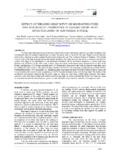Transcription of ASPECTS OF JAPANESE SHIPPING HISTORY
1 ASPECTS OF JAPANESE SHIPPING HISTORY . Professor Peter N Davies, University of Liverpool, JAPANESE SHIPPING and Shipbuilding: An Introduction to the Motives behind its Early Expansion' Professor Kunio Katayama, Osaka Gakuin University, JAPANESE Economic Development Strategy and the SHIPPING Industries, 1881-1894' The Suntory Centre Suntory and Toyota International Centres for Economic and Related Disciplines London School of Economics and Political Science Discussion Paper Houghton Street London WC2A 2AE. November 1999 Tel.: 0171- 405 7686. Preface A symposium on ASPECTS of JAPANESE SHIPPING HISTORY was held at the Suntory Centre on 5 March 1999. One speaker was Professor Peter Davies, of the HISTORY Department at the University of Liverpool, who also serves as President of the Centre for Port and Maritime HISTORY in Liverpool.
2 Professor Davies has written extensively on the HISTORY of SHIPPING , and on Japan has worked with Tomohei Chida to produce The JAPANESE SHIPPING and Shipbuilding Industries (Athlone Press, London, 1990). Professor Kunio Katayama, the second speaker, is a member of the Faculty of International Studies at Osaka Gakuin University, and was at the time visiting Clare Hall, Cambridge. Professor Katayama is an expert on maritime HISTORY whose most recent English language publications include The Expansion of Japan's SHIPPING Interests before the Sino- JAPANESE War' (in Starkey and G. Halaftis (eds.)), Global Markets: the Internationalization of the Sea Transport Industries since 1850 (University of Newfoundland, 1998).
3 We are grateful to both authors for allowing us to reproduce their papers here. Janet Hunter November 1999. Abstracts Peter Davies in his paper outlines the major trends in the development of Japan's commercial SHIPPING prior to World War I. The paper focusses in particular on the role played by the JAPANESE government, arguing that the promotion of the industry was undertaken primarily not for commercial, but for strategic imperialist reasons. Kunio Katayama's paper focusses on JAPANESE SHIPPING policy in the years immediately prior to the Sino- JAPANESE War of 1894-5. Using analysis of parliamentary debates over subsidies for SHIPPING and prize-winning essays on the topic, the author contends that public opinion in favour of the creation of major overseas SHIPPING lines was well established prior to the war, and that these plans were conceived for economic and commercial reasons, and not imperialist and strategic ones.
4 Keywords: JAPANESE SHIPPING industries. by Peter N Davies and Kunio Katayama. All rights reserved. Short sections of text, not to exceed two paragraphs, may be quoted without explicit permission, provided that full credit, including notice, is given to the source. 1. JAPANESE SHIPPING and Shipbuilding: An Introduction to the Motives Behind its Early Expansion by Peter N Davies I. When the meiji Government came to power in 1868 it quickly decided to give a high degree of priority to the development of its SHIPPING industry. This was then technically very backward and so undoubtedly required much support if it were to compete with international rivals. However in view of the other enormous task facing the new Administration it is a matter of some debate as to what persuaded the ruling elite to favour this course of action.
5 Some scholars, including Professor Kunio Katayama, are convinced that their prime motivation was commercial while others, including myself, believe that this was secondary to what were essentially strategic decisions to strengthen Japan's imperialist ambitions. It is hoped that this paper will make a useful contribution to this discussion by outlining the relevant events. These will then be analysed and a tentative conclusion will be II. Prior to the Tokugawa period JAPANESE vessels had ranged over large areas of what is now known as Indonesia, the Philippines and even part of Australia as well as the Asian mainland. The onset of the era of seclusion ended any long-distance voyages and the only journeys which were permitted were by small, wooden, sailing vessels known as wasen.
6 These provided inter-island and coastal services which, given the geography of Japan, were vital to maintain the economy. Indeed without them it would certainly not have been possible to have fed the population 2. of Tokyo, which had reached one million by 1800. Over the era many improvements were made to the wasen2, but the arrival of Commodore Perry in 1853 showed the enormous extent to which JAPANESE SHIPPING technology had fallen behind that of the West. Over the next 15 years this topic was widely discussed amongst the ruling elite. This was partly because it was believed to be the key to colonial expansion and the domination of trade which the Western powers were exploiting so successfully.
7 As the first practical step the Shogunate and many of the han acquired technically advanced ships . sail from North America and steam from mainly Britain so as to gain experience with the latest developments; but little could be achieved until after the formation of the meiji Government in 1868. When this came to power it faced the need to undertake the complete modernization of Japan's armed services and its political, economic, educational and social institutions. Nevertheless, the new regime indicated that it was prepared to give the creation of modern shipbuilding and ship-operating industries considerable support. The vessels it had inherited from the Shogunate plus a number that were acquired when the Government replaced the old han with prefectures in 1871 were placed in a state- controlled concern which then attempted to run commercial services.
8 These proved to be unsuccessful, partly because of an unsuitable structure, but mainly because of the competition provided by a private line, which by 1874 had become known as the Mitsubishi Sh kai3. In the same year Mitsubishi's enterprise in operating viable services between Tokyo, Osaka and Kochi was strengthened by an unexpected bonus. The JAPANESE Government had planned a military expedition to Formosa on the basis that their troops would be carried in chartered, 3. foreign vessels. When this proposal was vetoed by the principal powers it was decided to use JAPANESE tonnage and thirteen steamships were purchased for this purpose. These were entrusted to Mitsubishi who managed them for the length of the campaign.
9 Then, when it had been successfully concluded, the Government showed its gratitude by allowing Mitsubishi to retain the vessels for a purely nominal fee. This generosity was not without reason. The Government appreciated that at this stage of Japan's economic development one strong line was preferable to a number of weak ones, and so it gave all of its support to what it regarded as the most promising firm. This was further demonstrated when the state divested itself of all its remaining vessels which, again, were handed over to Mitsubishi at nominal cost. These events then encouraged the company, now re-constituted as the Y bin Kisen Mitsubishi Kaisha, to increase the range of its activities.
10 It established its own marine training school so that a start could be made in the replacement of expatriate deck officers with JAPANESE nationals. Then, with the aid of its additional capacity, Mitsubishi further developed its coastal routes and also commenced a new service between Yokohama and Shanghai. The inauguration of this China line brought the firm into conflict with the (American) Pacific Steamship Company, and this was only ended when Mitsubishi (with the aid of the state) was able to buy the ships and the shore facilities which their rivals had utilised on that route. Mitsubishi's strength was further tested when, in 1876, the P&O Line attempted to secure a footing in the trade.
















